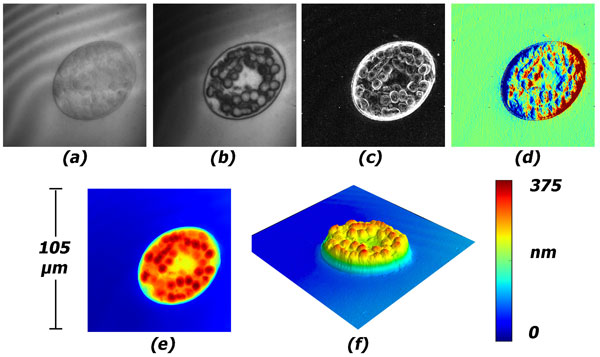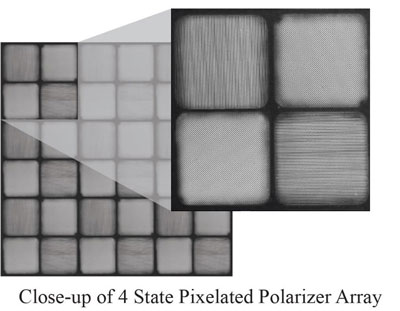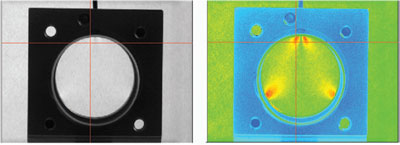Do you know pixelated polarizers?

Images of a protozoa determined from pixelated phase data
(a) Bright field (irradiance/intensity)
(b) Phase contrast (interference - a single interferogram)
(c) Phase gradient magnitude (simulated dark field)
(d) DIC (simulated, x gradient).
(e) Optical thickness
(f) 3D optical thickness
[Dynamic quantitative phase imaging for biological objects using a pixelated phase mask, Biomedical Optics Express, Vol. 3, Issue 11, pp. 2866-2880 (2012)]
The fact that Moxtek supplies highly heat-resistant polarizers for the 240 nm - 15 µm range is not so new. However, their “pixelated” version for cameras is less known. With a pixelated polarizer, up to four polarization directions are created on one substrate. The pixel size corresponds to that of the CCD or CMOS array; available standard sizes are 5.8 µm, 6.5 µm, 7.4 µm, 8 µm and 9 µm. Other sizes may be adjusted with the help of an image.
Application is by no means limited to the visible range. Depending on the desired wavelength, e.g. silicon can also be used as a substrate for the extended IR range, thus leading to new applications in InGaAs arrays.The polarizer is already used in polarimetric imaging.
The traditional way to obtain a 3D image is to use two separate images, which are combined by means of software. Pixelated polarization enables real-time 3D imaging with only one camera. By recording four polarization directions, the angle of polarization of the light when hitting the camera sensor can be determined. This allows an indirect conclusion to be drawn about the angle of the surface from which the light was reflected (provided that the angle of incidence of the light source is known). If the distance between camera and object is also known, it is possible to determine the 3D shape of the object.
A similar approach is used for phase-contrast imaging.
Pixelated polarizers are also ideal for low light conditions. In low light, the image or object cannot be distinguished from background noise. Multiple polarization axes in a single shot make up for this lack and enable the object to be imaged with remarkable clarity and contrast.
Contact
| +49 6157 80710-34 | |
| +49 6157 80710934 | |
| Write e-mail |





